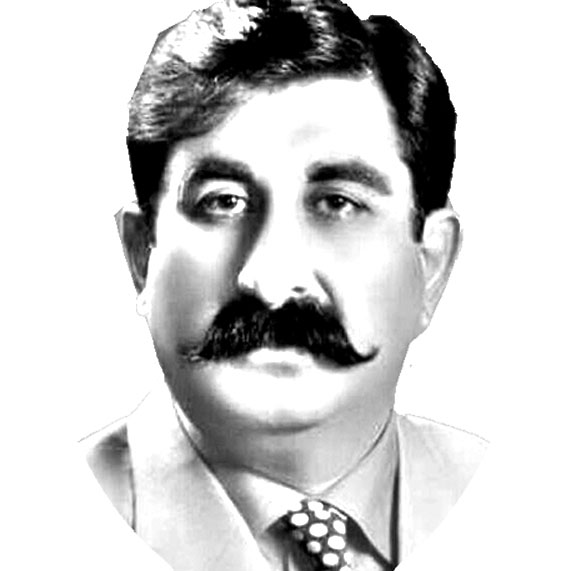Naveed Aman Khan
THE history of anti-government marches, some of which invited military intervention, is as old as Pakistan itself. Almost all the political and religious parties have used them as a tactic to pressure or topple governments in the past. Last time in 2019 thousands of anti-government protesters converged in Pakistan’s capital to stage a sit-in seeking the resignation of Prime Minister Imran Khan over alleged election rigging and weak economy. The sit-in led by former opposition leader Maulana Fazl-ur-Rehman, leader of one of the country’s main religious parties Jamiat Ulema Islami, is not something rare for the citizens of Islamabad who have braced several long marches and sit-ins in the last couple of years.
Pakistan braced the first countrywide protests in 1953, which was aimed at forcing the government to declare the Qadiani or Ahmadi sect as non-Muslims. The movement led to countrywide protests against Ahmadis which were quelled by the army imposing a three-month martial law in several cities. In the months that followed Maulana Maududi, a renowned religious scholar and founder of the country’s mainstream religious party Jamat-e-Islami, was sentenced to death for writing a leaflet on the beliefs of the sect, which was said to have stirred the riots. The death sentence was later converted into life term, and eventually set aside by the Supreme Court.
A popular movement launched by left-wing student unions in 1968 against the military rule of Gen. Ayub Khan is considered the actual beginning of political protests in Pakistan. Students, labourers and political activists staged countrywide sit-ins and protests forcing the General to step down, but instead of holding elections, he handed over the power to then Military Chief Gen. Yayha Khan. This was followed by protests against rigging in the 1977 elections held by the government of the then Prime Minister Zulfikar Ali Bhutto. The campaign launched by nine major political parties, popularly known as Nine Stars, was hijacked by the then Army Chief Gen Zia-ul-Haq, who dismissed Bhutto’s government, and imposed another martial law for the next 11 years. Zulfiqar Ali Bhutto, the country’s first-ever democratically elected Prime Minister, was later hanged following a controversial court judgment against him in a murder case in 1979.
Several political parties joined hands and launched Movement for Restoration of Democracy (MRD) from the port city of Karachi in 1983 to topple the martial law regime. The campaign led by Centre-Left Pakistan People’s Party (PPP) , however, remained restricted to the southern Sindh province, its stronghold. The Zia regime faced another huge movement led by Islami Jamiat Talaba (IJT), a student wing ideologically associated with Jamat-e-Islami, in 1984 for restoration of student unions in colleges and universities which were banned by the martial law regime. The ban was partially lifted in the north eastern Punjab province in 1989 only for a year by the then Chief Minister Nawaz Sharif, who went on to become the Prime Minister thrice. Despite repeated promises by successive governments, the ban remains. Two time Prime Minister Benazir Bhutto, and Nawaz Sharif launched long marches toward Islamabad against each other from 1992 to 1996, which led to the ouster of both governments.
Qazi Hussain Ahmad, Jamat-e-Islami chief, introduced sit-in protests to the country’s political history in the 90s. Apart from holding a huge sit-in against Benazir Bhutto’s government in 1996 in Islamabad, Qazi also led several sit-ins across the country against local chieftains and police excesses. The two major political entities, the PPP and Pakistan Muslim League-Nawaz, however, signed a “charter of democracy” in 2006 in London pledging not to topple the democratically elected governments through long marches and sit-ins. A historic “lawyers movement”, which began after the forced ouster of the then Chief Justice of Supreme Court Iftikhar Chaudhry by former military ruler Gen. Pervez Musharraf in 2007, eventually led to the latter’s unceremonial ouster. Musharraf had to resign in August 2008. Rejecting the Charter of Democracy, workers of Pakistan Tehreek-e-Insaf (PTI) party of the then Opposition leader Imran Khan, besieged Parliament in 2014 for 126-day to seek resignation of the then Prime Minister Nawaz Sharif over alleged electoral fraud.
Nawaz Sharif, however, refused to budge and Imran Khan’s claim of electoral fraud was also dismissed by the Supreme Court later. Now, Khan’s actions are coming to bite him as he is facing the second largest protest of his term while the country is battling with economic wroes and diplomatic challenges over the current crisis in Covid19 and Kashmir. Pakistan is a nuclear power but its economy and political circumstances have always been very unstable and shaky. During 2014 Imran Khan and Tahir ul Qadri’s 126-day long sit-in really damaged democratic norms and foundations of the country. During 2014 sit-in I have been writing in my columns that political executive powers have shifted behind the curtain. I wrote that post sit in next Prime Minister no matter who is who will be dummy and powerless. Post-2018 elections Imran Khan was produced as most powerless Prime Minister of Pakistan. Recent political protests of Pakistan Democratic Alliance (PDM) will again lead to worthy masses but more worthless representative of the masses in power in future. Such situation again will weaken democratic system of the country if powers of the democratic executive are not regained.
—The writer is book ambassador, columnist, political analyst and author of several books, temporarily based in United Kingdom.









